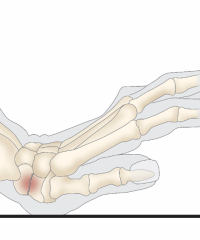De Quervain’s tenosynovitis
Recent posts
Do you have any doubt?
My goal is to help them regain not only function, but also the quality of life they deserve. If you are experiencing pain, movement limitations or injuries to your hands, I am here to offer you my experience in the field. Together, we can chart a path to recovery and restoration of vitality to your hands.
Categories
This affliction affects the abductor pollicis longus (APL) and the extensor pollicis brevis tendons, which are located around the base of the thumb, they’re part of the first extensor dorsal compartments in the wrist.
What causes the swelling?
Swelling may have two possible causes:
- Repetitive and continuous pressure to which the tendons are subjected to when passing through the inflexible osteoligamentous tunnel and a rigid structure made up of the dorsal ligament.
- Different anatomical variables like the APL tendon being split in two within the same tunnel that will cause pain.
When and where is the pain felt?
Patients usually feel pain in the anatomical snuffbox area. The pain can worsen when moving the thumb and there are certain movements or certain hand positions that can increase pain, such as rinsing out a towel, gripping a golf club, carrying a child or hammering a nail.
Who can be affected by this swelling?
De Quervain’s tenosynovitis can be six times more frequent in women and affects people in their 50s and 60s, but can also affect women postpartum or breastfeeding.
Which other illnesses have similar symptoms?
Arthritis of the thumb joint, a superficial retraction of the radial nerve or intersection syndrome, are some illnesses that have very similar symptoms to De Quervain’s tenosynovitis.
What’s the best treatment?
A non-surgical treatment can be started with painkillers, infiltrations and immobilizing the wrist, when done separately don’t provide an effective treatment which is why all three methods should be combined. For those patients that don’t improve with these treatments, then a surgical intervention should be considered, which consists of surgical release of the snuffbox or tunel. During pregnancy or breastfeeding the illness will disappear on its own with infiltration and immobilizing the wrist.











